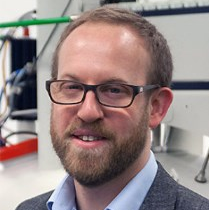Novel Bioinspired Materials for Biomedical and Biotechnological Applications
A special issue of International Journal of Molecular Sciences (ISSN 1422-0067). This special issue belongs to the section "Materials Science".
Deadline for manuscript submissions: closed (31 May 2022) | Viewed by 28630
Special Issue Editor
Interests: polymer synthesis; supramolecular materials; biomaterials; stimuli-responsive materials; drug delivery; tissue engineering; sustainability
Special Issues, Collections and Topics in MDPI journals
Special Issue Information
Dear Colleagues,
Nature is a practically inexhaustible source of inspiration for the design of synthetic materials. Hence, “bio-inspired materials” is a practically limitless field. In this Special Issue, we will focus on applications in medicine and biotechnology, where materials interact with biological systems, tissues, cells, and microorganisms to invoke the required response in a specific application. For example, we usually do not need microorganism growth in medicine, but we often need it in biotechnology. Characteristics of bio-inspired materials which are relevant for their performance may include, but are not limited to, topographical, chemical, mechanical, and electrical properties. Due to the wide scope of bio-inspired materials, contributions relating to biomaterials, tissue engineering, and biomimetics are also welcome.
Dr. John G. Hardy
Guest Editor
Manuscript Submission Information
Manuscripts should be submitted online at www.mdpi.com by registering and logging in to this website. Once you are registered, click here to go to the submission form. Manuscripts can be submitted until the deadline. All submissions that pass pre-check are peer-reviewed. Accepted papers will be published continuously in the journal (as soon as accepted) and will be listed together on the special issue website. Research articles, review articles as well as short communications are invited. For planned papers, a title and short abstract (about 100 words) can be sent to the Editorial Office for announcement on this website.
Submitted manuscripts should not have been published previously, nor be under consideration for publication elsewhere (except conference proceedings papers). All manuscripts are thoroughly refereed through a single-blind peer-review process. A guide for authors and other relevant information for submission of manuscripts is available on the Instructions for Authors page. International Journal of Molecular Sciences is an international peer-reviewed open access semimonthly journal published by MDPI.
Please visit the Instructions for Authors page before submitting a manuscript. There is an Article Processing Charge (APC) for publication in this open access journal. For details about the APC please see here. Submitted papers should be well formatted and use good English. Authors may use MDPI's English editing service prior to publication or during author revisions.
Keywords
- biomimetics
- biocomposites
- bioinspired
- biotechnology
- biomaterials
- tissue engineering






